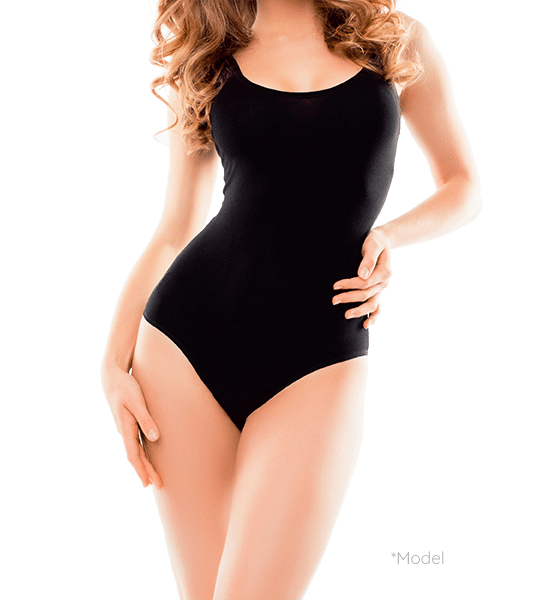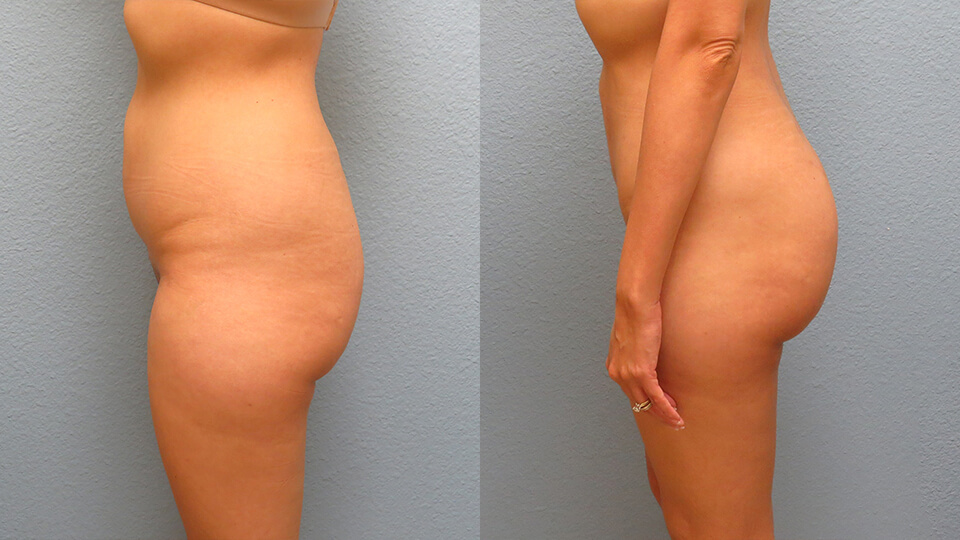Fat Transfer Surgery Offers Many Cosmetic Benefits
Fat Transfer
Fat transfer surgery is one of the most popular and common procedures we perform. It is extremely effective, and the results are permanent. We perform this procedure alone or in conjunction with other facial rejuvenation procedures, such as facelifts and eyelid surgery (blepharoplasty). The key to success is highly based on the surgeon’s experience and technical abilities.
Procedure
The procedure is commonly used for breast augmentation, buttock augmentation/contouring and wrinkle and crease reduction. Because the transplanted fat comes from the patient, it does not carry a risk of allergic reaction or rejection. Other advantages include a short recovery time, long-lasting results and effectiveness on any skin type.
Fat Transfer Surgery Postoperative Instructions
It is important to follow all of your doctor’s postoperative instructions for fat transfer surgery procedures to achieve the best possible surgery results. Corpus Christi Institute of Cosmetic & Plastic Surgery patients are provided with detailed instructions to ensure the best outcome to the procedure.

Fat Transfer Surgery Postoperative Instructions
-
GENERAL INSTRUCTIONS
- Have someone drive you home after surgery and help you at home for 1-2 days.
- Get plenty of rest and increase your fluid intake.
- Decreased activity may promote constipation, so you may want to add more ripe fruit to your diet. Prunes and prune juice work well for most.
- Take pain medications as prescribed. Do not take aspirin or any products containing aspirin or other non-steroidal anti-inflammatory drugs (NSAIDs).
- Do not drink alcohol when taking pain medications.
- Refrain from drinking alcohol for three weeks following surgery, even when no longer taking pain medications, as alcohol causes fluid retention.
- If you regularly take vitamins with iron, resume these as tolerated.
- Do not smoke or consume nicotine, as smoking delays healing and increases the risk of complications.
-
ACTIVITY RESTRICTIONS
- Start walking as soon as possible with assistance the day of surgery, this helps to reduce swelling and lowers the chance of blood clots. Starting the day after surgery, walk 300 feet three times per day with assistance daily.
- Do not drive until you are no longer taking any pain medications (narcotics).
- Sexual activity can be resumed in two weeks unless otherwise specified by Dr. Bindingnavele.
-
INCISION CARE
- You may shower 48 hours after surgery.
- Keep steri-strips on, and replace if they come off. Keep incisions clean and inspect daily for sign of infection. No tub soaking while sutures or drains are in place.
- Place daily soft dressing over incisions and around drain sites to wick away moisture and prevent irritation by garment along the incision line.
- Wear compression garment all the time (24/7) for six weeks post operatively, unless showering.
- Do not apply any pressure to area of fat relocation: if buttock, no sitting for 6 weeks.
-
EXPECTATIONS
- You may experience temporary stinging, throbbing, burning sensation, redness, swelling, bruising, and excess fullness.
- Maximum discomfort will occur the first few days.
- You will have bruising and swelling of the donor and recipient sites. The majority of bruising and swelling will subside in 6-8 weeks.
- You may feel tired for several weeks or months.
-
APPEARANCE AND DRAIN CARE
- Improved skin texture, firmer, and smoother skin.
- Empty drain bulb 3 times a day and record outputs in mL (milliliters) noting time of day and drain amount. Make sure to record each drain’s output separately.
- It is normal for drain outputs to vary and for clots to be in tube and bulb.
- Do not disconnect bulb from tube.
- Do not push in or pull on the drain tube at its entrance on the skin.
- See additional attachment for more instructions and additional drain log.
-
FOLLOW UP CARE
- Your post-operative appointment will be scheduled before surgery for your convenience.
-
WHEN TO CALL
- If you have increased swelling or bruising.
- If swelling and redness persist after a few days.
- If you have increased redness along the incision.
- If you have severe or increased pain not relieved by medication.
- If you have any side effects such as rash, nausea, headache, or vomiting.
- If you have an oral temperature over 100.4 degrees.
- If you have yellowish or greenish drainage from the incisions or notice a foul odor.
- If you have bleeding from the incisions that is difficult to control with light pressure.
- If you have loss of feeling or motion.
Common Concerns With Fat Transfer
-
What type of anesthesia is used during fat transfer?
Fat transfer surgery can be performed using local anesthesia. However, depending on the extent of fat removal, general anesthesia may be used to ensure patient comfort.
-
Will there be scars after my fat transfer?
Tiny incisions are made at the liposuction site and the injection site that may result in minimal scarring. Any scarring that does develop is likely to fade over time.
-
How long will my recovery period last?
The length of your recovery will depend on which area(s) have been enhanced using fat transfer. Fat transfer to the face has the fastest healing time of two weeks. Fat grafting to the buttocks has the longest recovery period of several months. During your consultation, your surgeon can discuss more accurate recovery timelines based on your individual circumstances.
-
Are the results of fat transfer long lasting?
There may be some initial volume loss after your fat transfer as the body absorbs some of the grafted fat. However, any fat that remains after six months will provide permanent enhancement.
-
How significant of a breast size increase can I expect using fat transfer?
Fat transfer surgery provides subtle enhancement of the breasts. Typically, most patients gain between a half cup and a full cup size increase.
Why Choose Dr. Vijay
Dr. Vijay is very unique in the sense of his great customer care, service and experience. He approaches each client as an individual and takes the time to thoroughly understand their needs and desired results.
Frequently Asked Questions About Fat Transfer
-
Am I a candidate for fat transfer?
Fat transfer is a two-step process that harvests fat using liposuction or 360-liposuction and injects it into an area needing increased volume. Because this procedure uses fat as the augmenting material, patients must have adequate fat stores elsewhere on their bodies. While most patients have enough fat, some very thin patients with little body fat are not candidates for this procedure. Candidates should not smoke, be in good overall health, and have realistic expectations for their results.
-
Is fat transfer to the face better than dermal fillers?
Many patients choose fat transfer over dermal fillers to restore facial volume because fat transfer:
- Offers an all-natural augmenting material
- Has no risk of rejection or allergic reaction
- Last longer than dermal fillers
- Removes unwanted fat elsewhere on the body
-
Why should I consider fat transfer to the buttocks?
Fat transfer to the butt (also known as the Brazilian Butt Lift) is one of the most common fat grafting procedures as it allows for a fuller, lifted, and rounded butt. This procedure enhances the entire midsection and helps create an hourglass silhouette.
-
Is fat transfer to the breasts better than implants?
While fat transfer to the breasts cannot achieve the same volume increase as breast augmentation with implants, some women prefer this procedure to avoid potential implant-related complications, such as capsular contracture, implant rupture, and implant displacement. Fat transfer to the breasts subtly increases the breast size while maintaining a natural look and feel. Multiple procedures are usually required to get the results most want unless the goal is to correct a localized contour irregularity or a small increase in size.
-
Why does some of the injected fat not survive the transfer?
During your fat transfer, it is expected that the body will absorb and metabolize some of the injected fat. Therefore, Dr. Vijay injects a larger amount of fat into the treatment area than what will result. While this causes the treatment areas to look larger than desired initially, these contours will settle over the following days and weeks.
